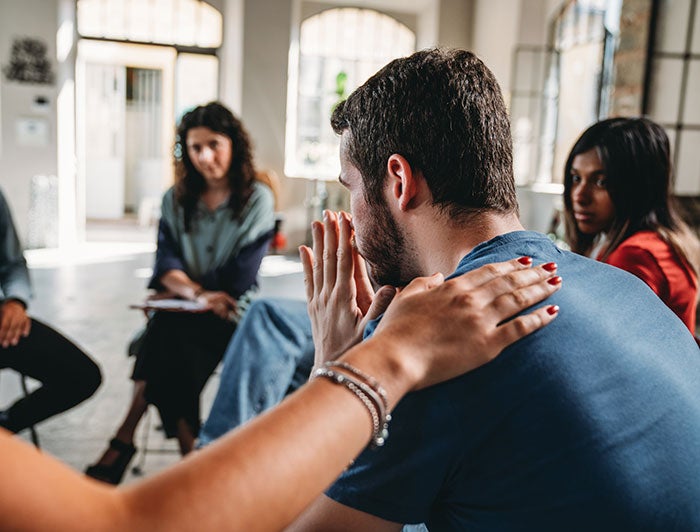Building Bridges to Recovery and Health in Central Utah

Addressing opioid use disorder and substance use disorder requires more than medical treatment: It calls for collaboration, trust and a dedicated team committed to shared success. Looking for ways to respond to the rising needs of individuals and families affected by SUD in the communities it serves, Intermountain Health, headquartered in Salt Lake City and serving the western United States, collaborated with local organizations in Utah to create a seamless support system that broadens prevention treatment and increases long-term recovery results.
Intermountain found success in designating a community health worker to lead this integrated approach in a rural community, which not only improved access to outpatient services but also led to life-changing outcomes for community members of all backgrounds dealing with SUD and OUD, including formerly incarcerated people.
Responding to a Need for Collaboration and Change
After receiving a Rural Communities Opioid Response Program planning grant in fall 2020, Intermountain Health used it to conduct a needs assessment in rural counties in Central Utah. These counties had some of the highest opioid overdose death rates in the state.
Intermountain interviewed community members, collaborating organizations, clinical providers, law enforcement members, educators and individuals with lived experience to map resources and activities related to prevention, treatment and recovery efforts for individuals with OUD and SUD. The findings led Intermountain to form a consortium focused on recovery, prevention and treatment that effectively addresses these challenges.
Bringing Together Key Collaborators
Each collaborator in the consortium brings unique strengths and resources that enrich the consortium’s efforts and allow it to address OUD/SUD from multiple angles, creating a comprehensive support system.
- Intermountain Health received a grant for the program, provided program management and delivered telehealth-based treatment via medication for OUD, ensuring accessible treatment options.
- Central Utah Public Health Department supported harm-reduction efforts by distributing Narcan and naloxone and providing prevention training to the community.
- Utah Support Advocates for Recovery Awareness (USARA), a nonprofit recovery group, offered peer-support and advocacy, while also connecting individuals with SUD/OUD with certified peer-recovery support specialists who have lived experience.
- Central Utah Counseling Center, a local mental health authority, facilitated recovery social events for individuals and community members, fostering a supportive community for those in recovery and helping reduce stigma within communities.
- South Sanpete School District focused on prevention through after-school programs, engaging youth in enriching and affirming activities to build connections and reduce risk for substance use.
- Sanpete County Jail served as the primary law enforcement collaborator and employed the community health worker, providing a critical connection to incarcerated individuals.
Initial Challenges in Working Together
The consortium’s primary challenge was identifying a champion to lead and unify its efforts and drive momentum. Once the consortium recruited a community health worker who was a respected community member with a deep passion for supporting the incarcerated population, the program gained the local support it needed to thrive. At that point, the consortium was able to overcome initial coordination hurdles and align efforts that helped propel the program forward.
The Power and Impact of Collaboration
This collaboration achieved a holistic, communitywide impact that no single organization could have accomplished alone. By combining health care, public health, peer support, education and law enforcement, the initiative created a comprehensive system that addressed OUD/SUD at every stage — from prevention to treatment and recovery.
For example, the integration of telehealth treatment from Intermountain Health with peer support from USARA and harm reduction efforts by the Central Utah Public Health Department increased access to treatment and helped reduce overdose rates. Additionally, the collaboration enabled outreach to marginalized populations, such as incarcerated individuals at Sanpete County Jail, providing people with tailored support that fostered lasting recovery and ensured community reintegration.
Lessons Learned
Collaboration is the cornerstone of transformative health outcomes. When several partners unite around a shared goal and bring their unique strengths to the table, together they can create a ripple effect of change that no single entity could have achieved alone. To those looking to improve health outcomes, the Intermountain team advises: Embrace collaboration, seek out champions who can bridge divides and build a network that amplifies each partner’s impact.
“By elevating these trusted voices, the program gained the local support it needed to thrive, enabling us to overcome initial coordination hurdles and align collective efforts for greater community impact.”
——Sarah Diefendorf, Community Health Director, Intermountain Health
